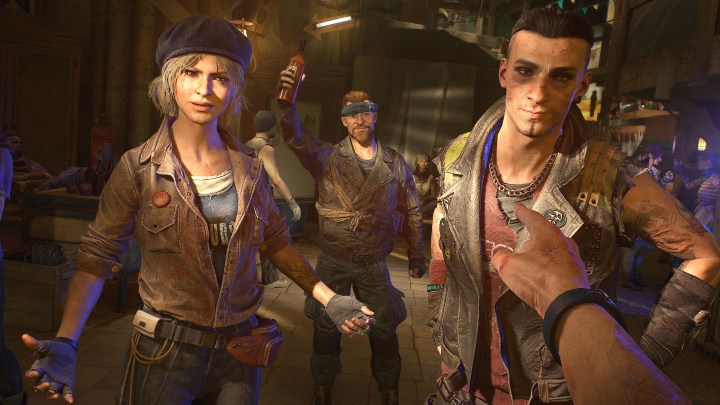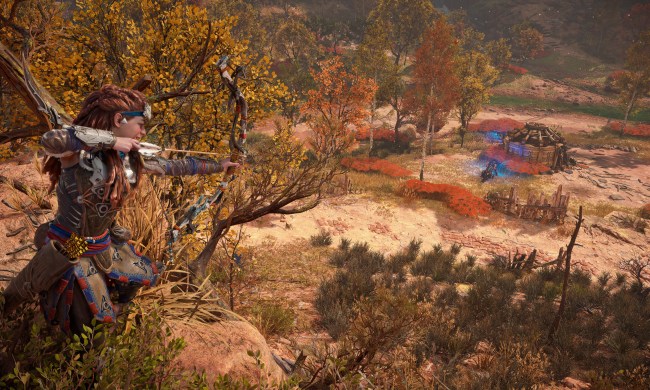Remember the days where the most dialogue you’d get in a video game was “the princess is in another castle?”
In the early days of the industry, game makers weren’t exactly wordsmiths. They didn’t need to be; video games were fun toys, not a vehicle for complex storytelling. Naturally, that’s changed as ambitions for what the medium is capable of have grown. Games like The Last of Us sport long scripts that are every bit as compelling as a Hollywood drama. Once shy to utter a word, today’s video games are eager to cram as many in as possible.
Perhaps too eager. Recent releases like Horizon Forbidden West and Dying Light 2: Stay Human boast tremendous amounts of spoken dialogue, which can be a drag to get through at times. An over-reliance on talkative NPCs can pave over what makes video games special: Emergent narrative and environmental storytelling.
You talk too much
Before Dying Light 2 released, developer Techland pulled out a staggering statistic: “350,000 words, 40,000 lines of dialogues — that’s the world we’ve built for you in Dying Light 2 Stay Human,” the studio tweeted. “To put these numbers into perspective: Anna Karenina also has 350,000 words.”
To put these numbers into perspective: "Anna Karenina" also has 350,000 words.
— Dying Light (@DyingLightGame) January 19, 2022
The marketing stunt was a bit of a misfire. The tweets were widely mocked for comparing a zombie parkour game to a literary classic just because it had a similar word count. The move would look even sillier when reviews for the game dropped and critics largely cited its writing and story as a weak point of the game.
In a critique of the PR blitz, Digital Trends writer Otto Kratky criticized the game for its muddy story full of flat characters who can’t stop talking. “For Dying Light 2, the disconnect between actually playing the game itself and its marketing is staggering, so let me set the record straight: You shouldn’t get this game for its story or characters,” he writes.
Those criticisms were running through my head as I played Horizon Forbidden West. Unlike Dying Light 2, the narrative is a high point of the game. But the way story beats are delivered often left me exhausted. NPCs spend up to 30 minutes giving Aloy dry exposition about the world (that’s not an exaggeration — I timed conversations). Early on, a character asks Aloy if she’d like to hear his story, but even jokes that it’s a long one. He wasn’t lying. I caught myself scrolling social media 20 minutes later, realizing I hadn’t actually retained a word he said.

While it’s far from a deal breaker (it’s an excellent sequel overall), it does create pacing issues. Whenever I’d enter a new village, it usually meant that the bulk of my play session would be dedicated to sitting through a wordy lore dump. I’d say that those long conversations could have been placed into supplemental text logs instead, but the game has those too — a whole lot of them. They don’t alleviate the burden.
Understanding the full story and world of Horizon Forbidden West means that players will need to spend hours on end not actually playing the game.
Show, don’t tell
Games like Horizon Forbidden West have a bit of an identity crisis. It’s clear that Sony and other AAA publishers like it pride themselves on releasing “cinematic” video games that reach the storytelling heights of film and TV. That industry focus on elevating the medium has seen a bigger emphasis on writing, which has been a net positive for the industry at large.
Still, games find themselves in an awkward position when they try to take cues from noninteractive visual media. Games aren’t movies; the two mediums have entirely different toolsets. When a game spends hours having characters rattle off lore like the world’s dullest podcaster, those tools aren’t being taken advantage of.

For example, Horizon Forbidden West misses some opportunities to tell stories through its environmental design. My favorite moments came when I’d stumble into a field of decaying satellites. I immediately started to wonder what the story was there. What was this place before the apocalypse? Why did a tribe decide to build its village around these ruins? I wanted to snoop around and find those answers cleverly hidden in the art design, but it was more likely I’d find an audio log lying around that gave me a backstory.
Some of gaming’s most compelling stories are ones that are never explicitly told to the player. Every room in Bioshock has a hidden narrative that players can sleuth out by observing the art design. Learning becomes an interactive experience, a puzzle in and of itself. The act of play is never pushed to the side.
Every game has different needs when it comes to storytelling, but today’s big-budget action games could stand to trim their scripts and let the gameplay do the talking. That’s something Anna Karenina can’t do, no matter how many words it contains.



